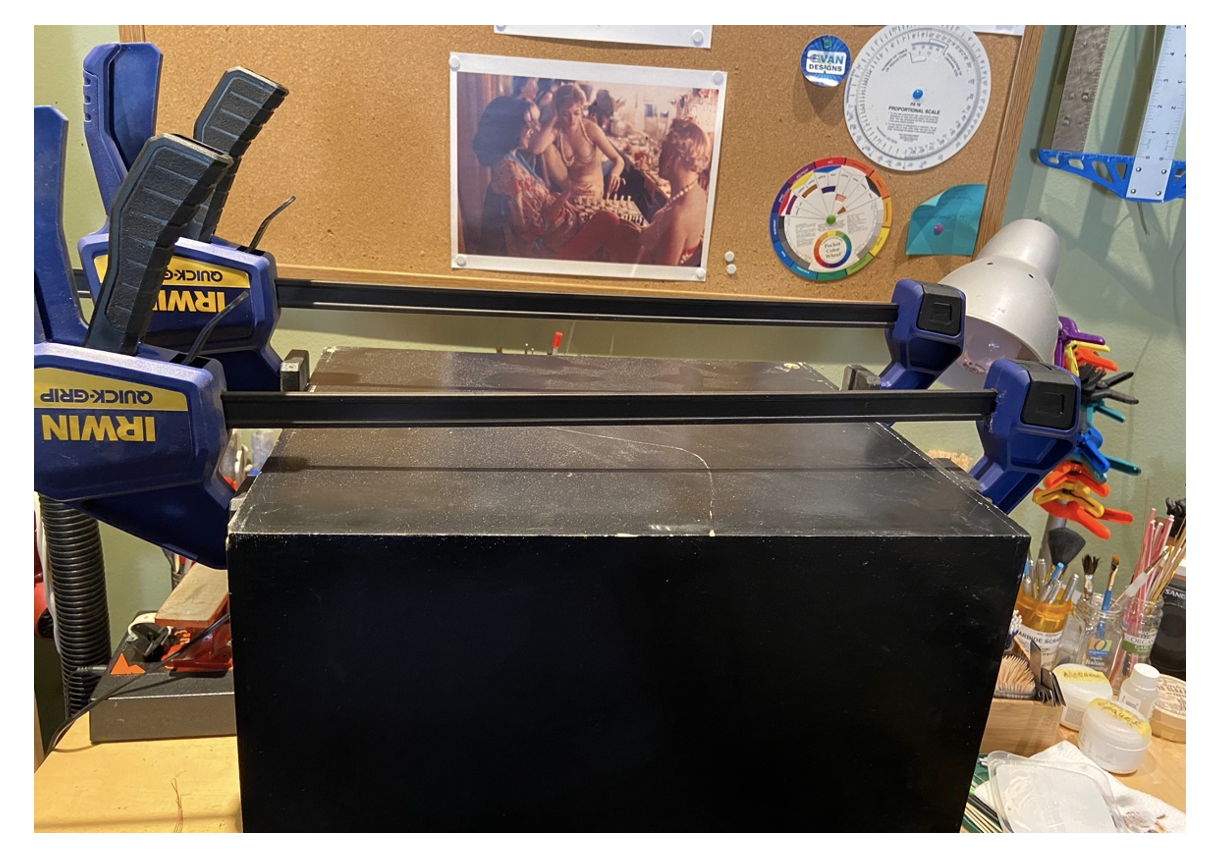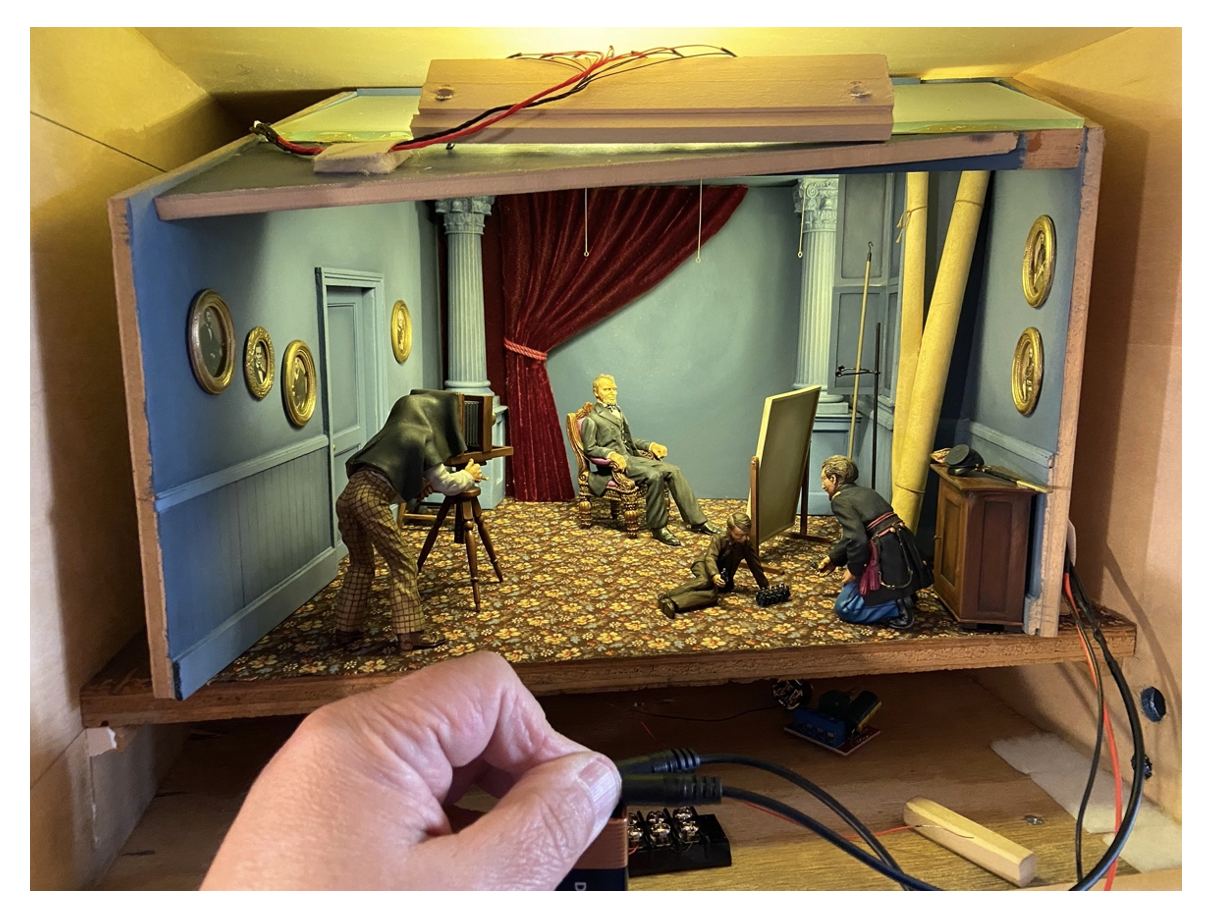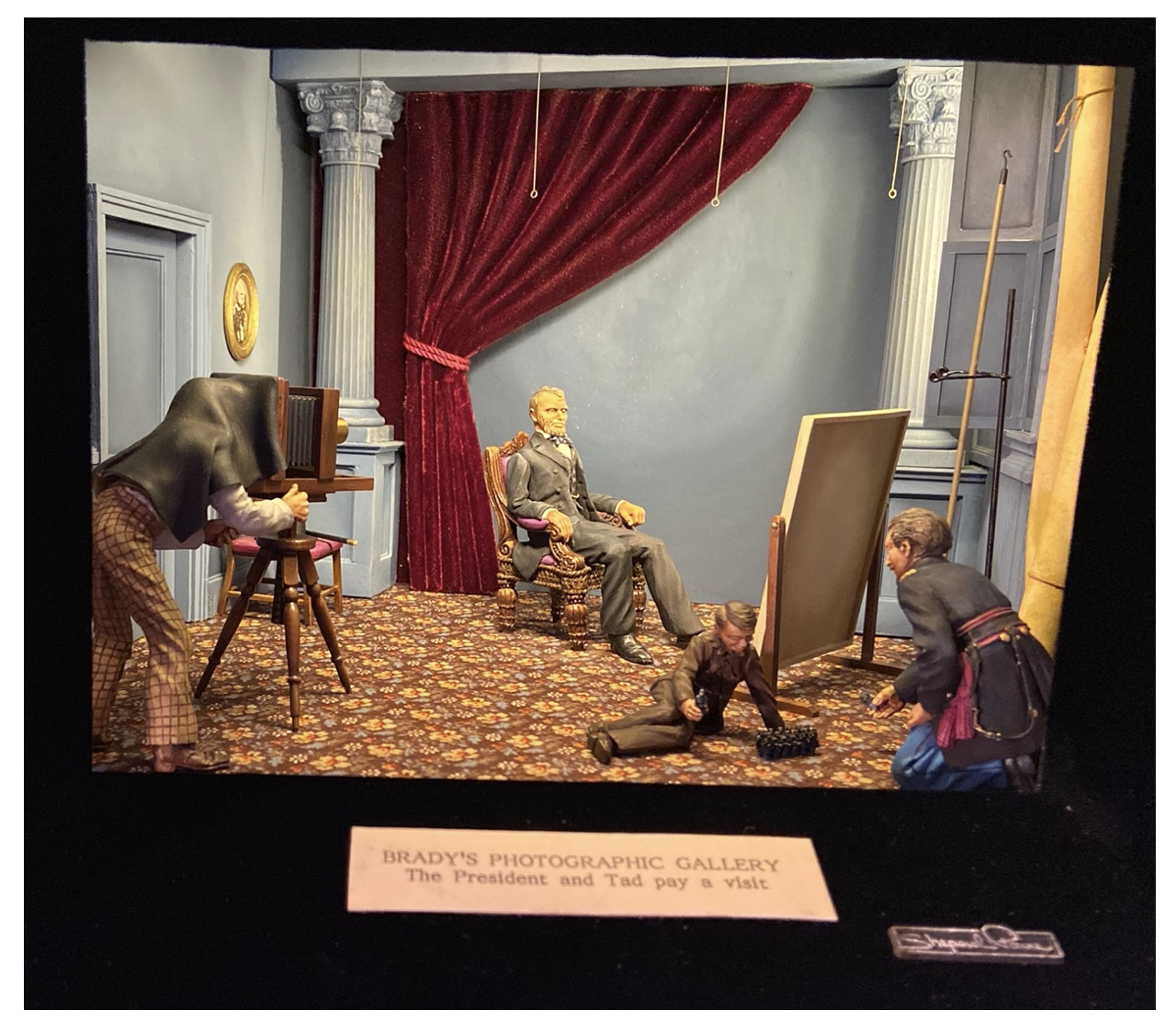From Sheperd Paine: The Life and Work of a Master Military Modeler and Historian by Jim DeRogatis (Schiffer Books, 2008)
J.D. Did you envision “Brady’s Photographic Gallery” as a bookend to “A Stillness at Appomattox”?
S.P. No. I got interested in Brady’s studio while learning about old photographic techniques. I wasn’t that interested in the darkroom aspect, but I was fascinated by the sophistication of the studio lighting. Photographers had no artificial light to work with—none of the floodlights or flash units that are a modern photographer’s stock in trade—so they had to do it all with natural light. They used skylights for the main light and white reflecting screens for fill. The skylight was usually frosted glass, providing a diffuse light, and they could adjust a series of window shades to reduce or increase the amount or direction of the light coming through the skylight.
So it was the studio itself that interested me. There is a reflecting screen in the box, and some rolled-up, painted backgrounds against the wall. As I thought about who to show being photographed, it seemed only proper to have Lincoln posing for his portrait. He was, after all, Brady’s most famous subject. The original idea was to have Brady himself as the photographer, but as I did more research, I learned that a year or so into the war, Brady’s eyesight began to fail, so he had staff photographers do most of the photography. It is uncertain who took the famous portrait of Lincoln. Brady photographed Lincoln many times, but the most famous portrait attributed to him is the one on the five-dollar bill. I thought that would be the one to do, but nobody is quite sure who actually took the picture.
J.D. Conveniently, the photographer’s head is covered!
S.P. That was my way out, and that’s why the title is “Brady’s Photographic Gallery,” rather than “Brady Photographing Lincoln,” because we don’t know whose head is under the hood. It probably wasn’t Brady, but who knows?
J.D. You also have a boy and a Union soldier in the scene.
S.P. The officer is Lincoln’s aide de camp. Lincoln would hardly have walked down to Brady’s studio alone, and a military aide would have been the most likely person to have accompanied him. I knew that the photographer and Lincoln were not enough to carry the box on their own; a subplot of some kind was needed to fill things out. I learned from my reading that this also happened to be the photo session in which Lincoln was photographed with his son Tad. I wanted to show Lincoln being photographed alone, so I came up with the idea of having Tad and the aide de camp doing something. A natural situation would be to have Tad and the aide de camp playing with some toy soldiers, so that’s what I did.
The clincher for the idea was that Micro-Armor had just introduced a series of infantry in ranks in 1/285th scale, and I realized that if I painted those up in Union blue, they’d be perfect toy soldiers. But don’t look too closely: The figure set I used was actually Russian infantry, and they’re all carrying submachine guns! Of course, you’d have to take a magnifying glass to see that, and nobody has ever caught it.
J.D. I love the commentary of the sadness and dignity of Lincoln, with his son’s toys bringing an echo of the war into the scene. You also have some other famous photographs on the walls of the studio.
S.P. I clipped those from the covers of books in History Book Club ads, because it was the only place I could find portraits the right size. Computers have benefited modeling enormously, not only with the research, but in providing the technology to print signs and other things.
In May 2023, this box was sold at auction from the collection of the late Ralph Koebbeman. Joe Beeton purchased it and Jim DeRogatis restored it; here are his notes on that project.
The inner tray removed. Shep’s construction of this scene was ingenious: The “room” sat on the tray and everything in its was secured for removal. The lighting was via those two incandescent bulbs on top, through a pane of frosted glass, with another, partially blacked out, on the right side, through more of the same glass. He was illustrating what he and Lane Stewart had written about in their photo book!
The 16th President out of the box for the first time since 1988. Joe noticed some serious lead rot around the seat of the chair; here, that’s been cleaned off, re-primed with Humbrol enamel primer, repainted to match the original as closely as possible, and covered with a gloss coat. Taking Lincoln out was a bit hairy—Shep secured him with one small pin in the left foot, and two of the chair legs glued to the carpet. Patience won the day, but his left leg broke off and had to be reglued and filled to cover the seam. The box itself wasn’t in great shape, and the back corner had to be resecured with wood glue.
Above: Final lighting tests. Below: the box restored. The cell phone always “brightens” the images, but I installed a dimmer to control how intense the overheads make the overall scene, depending on the room where it’s displayed.








